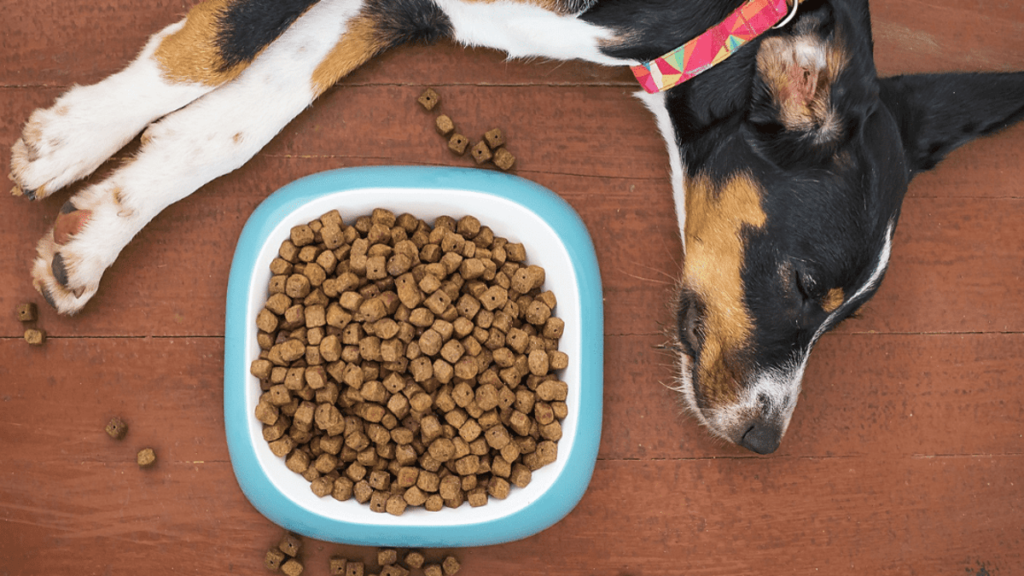Properly balancing all the ingredients becomes even more onerous in case of liver disorders in the dog. The ideal would be to choose a veterinary diet based on high quality pre-packaged foods (wet or crunchy), from the gastrointestinal line (or similar) which guarantee all the necessary nutrients in a specific and appetizing formulation.
However, these rations in the long run can easily tire the demanding tastes of a malfunctioning liver, therefore it is useful to know the principles offeed for dogs with liver problems.
The functions of the liver in the dog
The liver is best known for its role in the emulsification and in the fat metabolismfor this a diet for dogs with liver problems will undoubtedly have to be low fat.
However, this is not the only precaution to correctly balance a diet of this type: liver disease in dogs is often insidious because this organ is very numerous and important. physiological functionscome:
- the digestion of fats, the synthesis of cholesterol and triglycerides;
- the production of bile;
- the storage of glycogen (which is then transformed into glucose if necessary and supplies energy to the body) and the regulation of blood sugar (insulin);
- the production of blood clotting factors
- it intervenes in the metabolism of proteins (eg production of albumin) and in the disposal of ammonia;
- it acts as an anti-toxin filter (e.g. drug residues) and disposes of e.g. damaged red blood cells.
Inappetence in dogs with liver problems
Liver diseases are varied, some of the most common in dogs are:
Although different, these dog pathologies can have a common symptomatology, such as jaundice (that is, the yellowish coloration of the mucous membranes) or ascites (fluid pouring into the abdominal cavity).
However, the common sign of hepatic pathologies is undoubtedly the loss of appetite. Liver problems could cause nausea, inappetence, and to this is added the fact that the new diet will have a reduced fat content and therefore less palatable.
So how to properly feed a dog with liver problems?
Food for dogs with liver problems
Since correctly balancing all the ingredients becomes even more expensive in the case of liver disorders, the best thing would be to choose a veterinary diet based on high quality pre-packaged foods (wet or crunchy), from the gastrointestinal line (or similar) which guarantee all the necessary nutrients in a specific and palatable formulation.
However, in the long run, these rations could easily tire the demanding tastes of a poorly functioning liver, therefore it is useful to know the principles of a home-made diet for dogs with liver problems.
Homemade diet for dogs with liver problems
A diet for dogs with liver problems must first of all be varied, to stimulate the dog’s appetite at each meal.
The ideal would be to feed Fido little and often, dividing the 2 main meals into 3-4 meals a day so as not to overload the liver during digestion.
Features of the diet
A diet for dogs with liver problems includes a diet based on proteins, carbohydrates, fats (few but good!), fibers, vitamins and minerals, but what changes are the proportions and the quality of the foods used.
- I carbohydrates make up for the subtracted energy source of fat. The best ones are those with a high content of soluble fiber, which helps detoxify the body.
- The protein of animal origin are very important: you have to choose those that produce the least quantity of ammonia residues (toxic to the body), such as white meat chicken and turkey
- Fibrevitamins and minerals are mainly contained in vegetables and help promote proper intestinal function.
Example of home feeding for dogs with liver problems
daily portion for 20 kg dog:
- 500 g of potatoes
- 50 g of courgettes
- 50 g of carrots
- 250 g chicken (skinless and defatted)
- 1 tablespoon of soybean oil
How to prepare it: all the ingredients are boiled or steamed, alternatively courgettes and carrots can also be supplied fresh. The potatoes, on the other hand, must be “overcooked”, to the point of being able to mash them effortlessly with a fork. It is advisable to cut them into pieces before cooking in order to save time. All without any condiments.
Alternatively:
- You can replace the vegetables listed above with vegetables that are good for dogs, perhaps in season. Broccoli, squash, and cabbage (occasionally) are great alternatives that are especially good for liver ailments
- Instead of potatoes, alternative sources of carbohydrates can be used, such as rice, but the doses will have to be reduced a little.
- Instead of chicken, you can give turkey or cod, rich in omega-3s. Red meats are not recommended, but occasionally you can try to make an exception by choosing leaner pieces (less than 5% fat) such as adult beef rounder or veal fillet, which however has a higher cost.
- If you have difficulty finding soybean oil, you can fall back on sunflower oil.
This diet is just one example, it doesn’t necessarily suit all needs: always ask your vet for confirmation before changing the diet for dogs with liver problems.
Advice:
- You can freeze portions to better organize meals,
- Mix the potatoes with the rest of the baby food so that Fido cannot discard;
- Try to provide at least one of the warm foods, preferably meat, so that the smell can tempt Fido.

